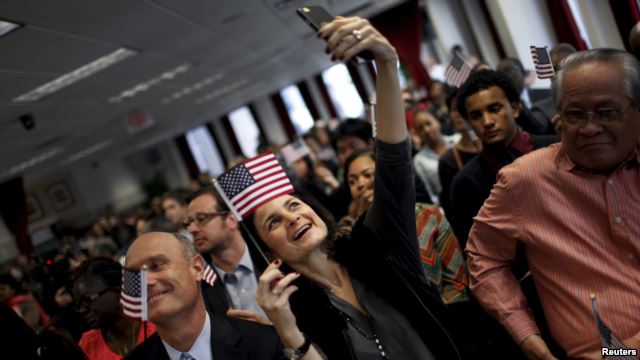
[전문 & mp3] / [받아쓰기]
Between 1990 and 2000, immigration to the United States increased greatly. The immigrant population increased by 11.3 million to 31.1 million in that decade, according to U.S. Census data. Many children born to those immigrants are now or will be 18 – the age Americans are eligible to vote. Any child born in the United States is a U.S. citizen, even if their parent is not in the country legally. They can vote when they reach 18, according to the U.S. Constitution. The effect of that wave of immigration in the United States is significant. For one, more immigrants will be able to vote in 2016 than previous U.S. presidential elections. For another, how immigration policy will be shaped is central to the 2016 presidential race.
* immigration to ~ = ~로의 이민/ census = 인구 조사/ born to ~ = ~에서 태어난/ eligible to ~ = ~할 자격이 있는/ vote = 투표하다/ Constitution = 헌법/ effect of ~ = ~의 영향; 결과, 효과/ shape = (중요한 영향을 미쳐서) 형성하다/ central to ~ = ~에 중심이 되는/ presidential race = 대통령 선거전
Front-running Republican presidential candidate Donald Trump has focused his campaign on harsh speeches about immigrants. He proposes building a wall along the U.S.-Mexican border to keep illegal immigrants out. He proposes deporting the estimated 11 million undocumented immigrants, though he says he would allow many to return. In 2013, close to 47 percent of immigrants (19.3 million) were naturalized U.S. citizens, according to the Migration Policy Institute. The remaining 53 percent (22.1 million) included legal permanent residents, unauthorized immigrants, and legal residents on temporary visas, such as students and temporary workers, the institute says.
* front-running = 선두를 달리는/ harsh = 가혹한, 냉혹한, 혹독한/ keep ~ out (of ~) = ~이 (~에) 들어가지 않게 하다/ illegal immigrant = 불법 입국[체류]자/ deport = 강제 추방하다/ undocumented = 밀입국한/ naturalize = 귀화시키다/ permanent resident = 영주권 취득자












